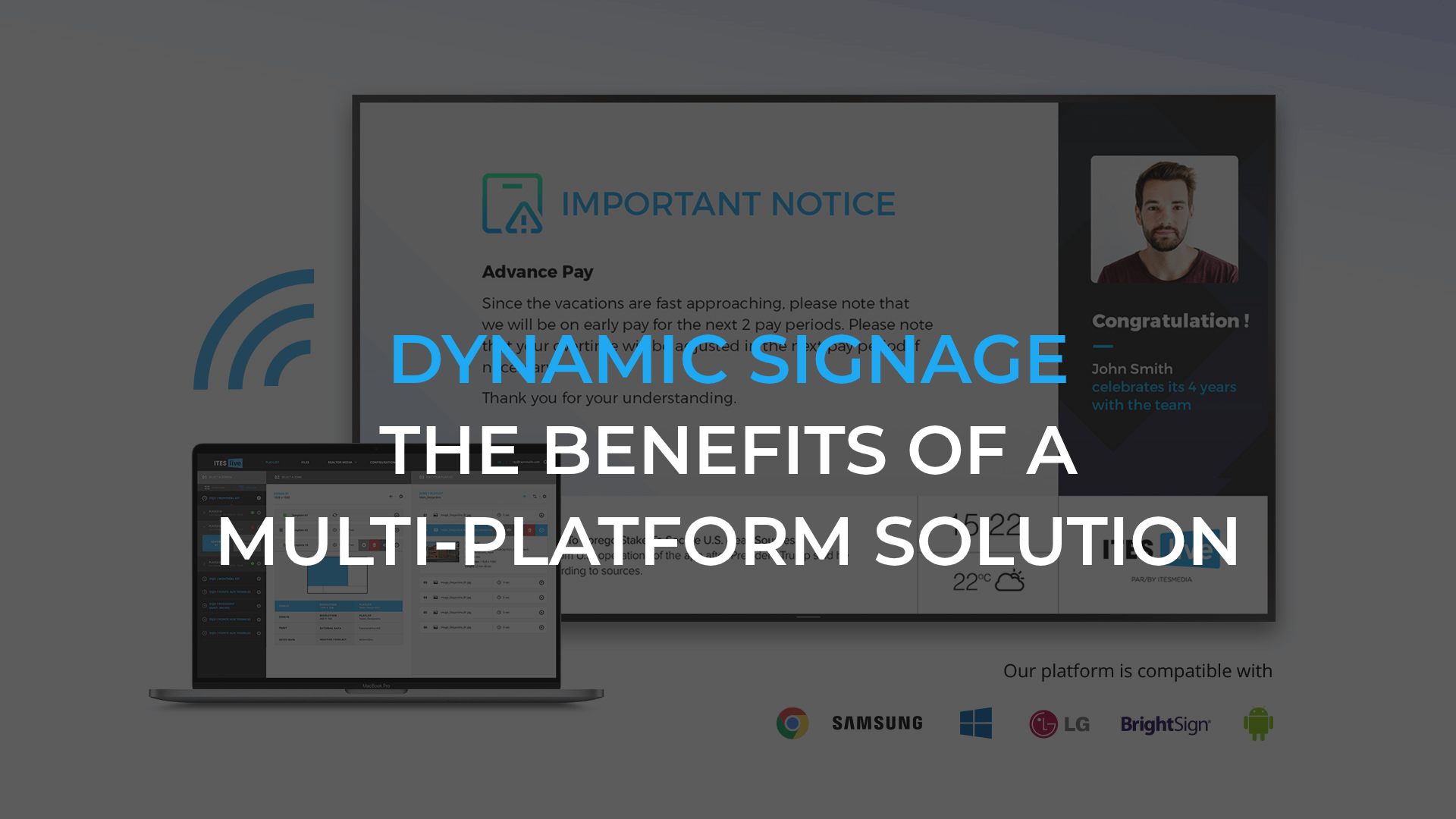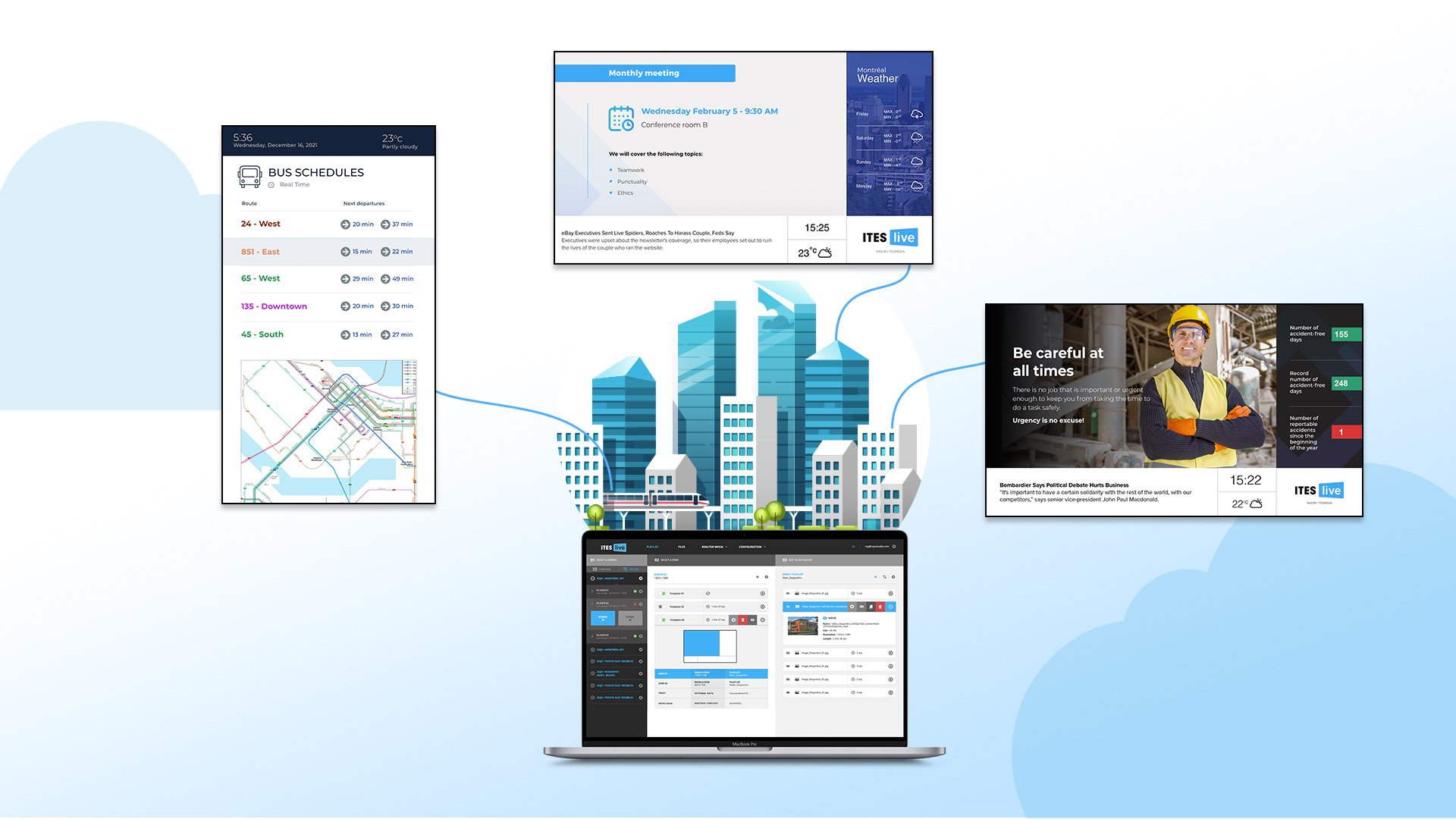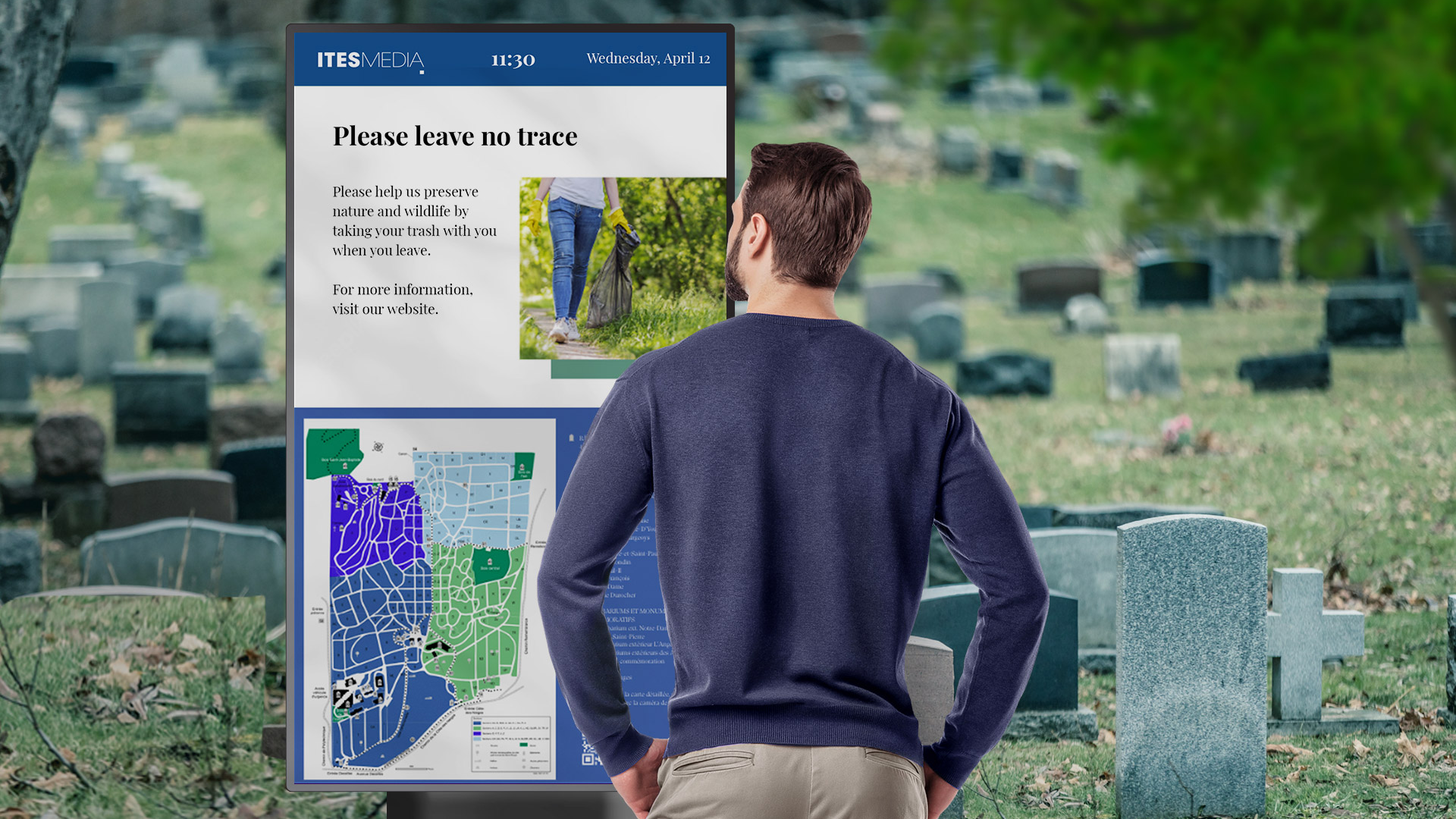More and more operating systems and platform types are becoming available in the information technology industry. More specifically, in the dynamic signage sector, available platforms were long limited to Microsoft Windows. As for all scientific domains, information technology is a rapidly evolving sector in constant change. We are beginning to see an increase in new technologies and new platforms, which is a significant challenge for software designers. However, for buyers of these products, this evolution provides a wide variety of interesting options at competitive prices.
The power of choice
Buyers of these types of products can choose between a wide range of products and different solutions to meet the same need. By choosing software with multi-platform support, it is possible to purchase dynamic display screens in the first phase according to the cost of equipment without having to worry about future compatibility issues. At a second phase of implementation, you have the option of purchasing screens from another brand which, at the time, could be less expensive than the ones bought at a previous phase. It therefore becomes possible to use the same software on different platforms and eliminate any concerns about having to manage the purchase of new software during the project management phase. For example, a first phase of dynamic display deployment could be accomplished through technologies from Microsoft, and a second phase could include purchasing monitors from LG, Samsung and Android. Using multi-platform software allows you to use the same content-sharing software for your entire network. Are you are initiating a third phase because you could take advantage of a substantial discount with BrightSign’s products? No problem: your software is multi-platform! You just need to purchase the new equipment and efficiently initiate your deployment using the same software you have been mastering since phase one.
Read: Why should you try your digital signage software before buying?
Managing costs
In a context where we have access to a high number of offers, managing costs becomes easier since manufacturing companies for different platforms face intense competition – which translates into lower costs for buyers. 25 years ago, the main operating system option was Microsoft Windows. When Microsoft Windows 95 was launched in 1995, the license cost 210 US$. In 2020, even after 25 years’ worth of inflation, a Microsoft Windows 10 license is about 140 US$. According to public data on inflation in North America between 1995 and 2020, a Microsoft Windows 10 license “should” cost about 350 US$. The product’s novelty, as well as its near monopoly on the market at the time, warranted its high price compared to its price in 2020.
An important benefit of choosing software with multi-platform compatibility such as ITESLIVE is the ability to manage costs more closely. Important savings are possible both when purchasing equipment and training your users on the content-sharing software. With multi-platform software, you only need to train your staff on a single software product.
The many offers on the market require buyers to do more research to ensure they are buying the best product at the best price. They must keep a sharp eye and take the time to validate that the technology they are purchasing today will not become useless in the short term. Obsolete products (e.g. products based on Flash technology which were not multi-platform compatible) can prove costly in terms of maintenance, and can also double the amount of expenses in a short period in equipment and software replacement (read: Surviving Adobe Flash Player’s end of life). The fast pace of technology turns tools which seemed innovative a few years ago into obsolete artefacts. Multi-platform software won’t stop working overnight; you will always have an alternative solution towards another platform. Therein lies the substantial value that multi-platform software can offer you.








